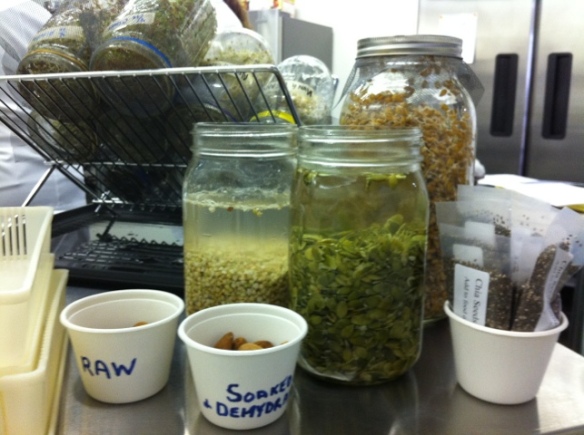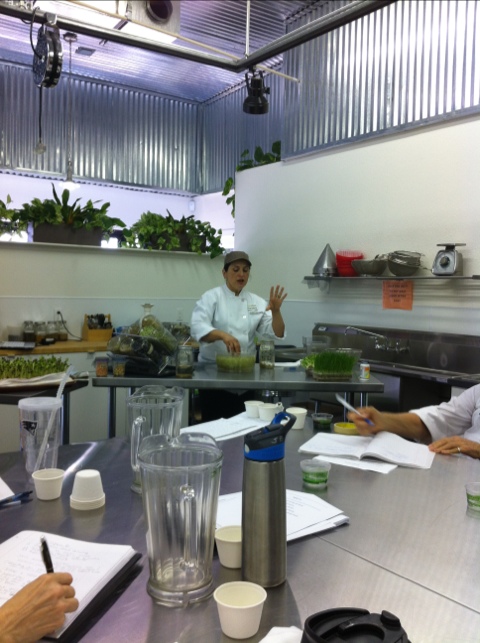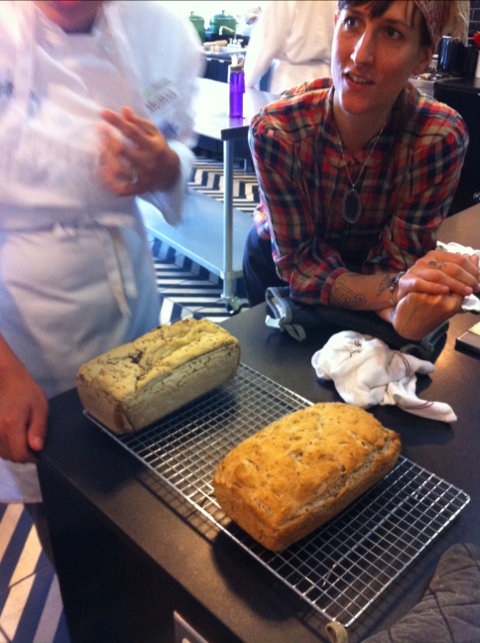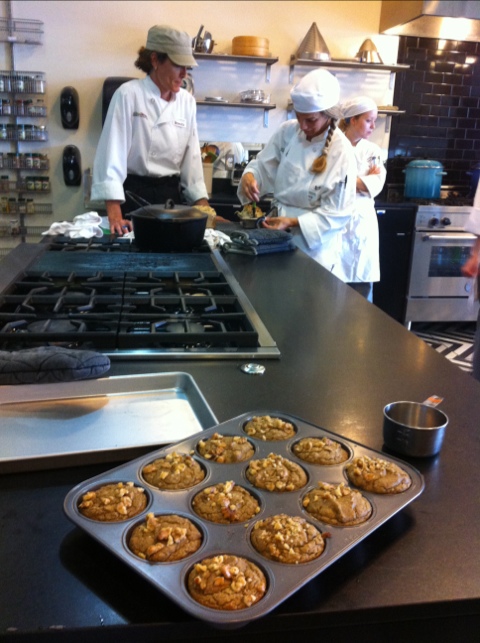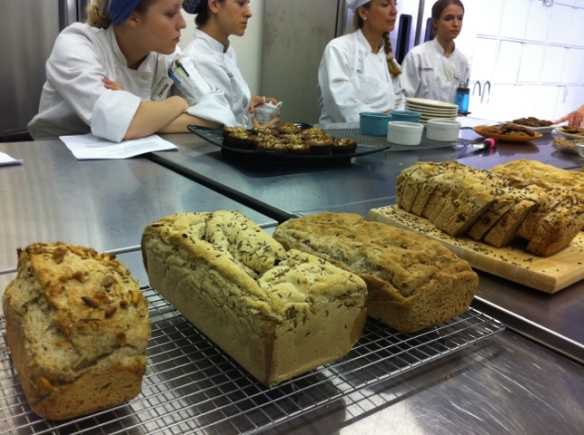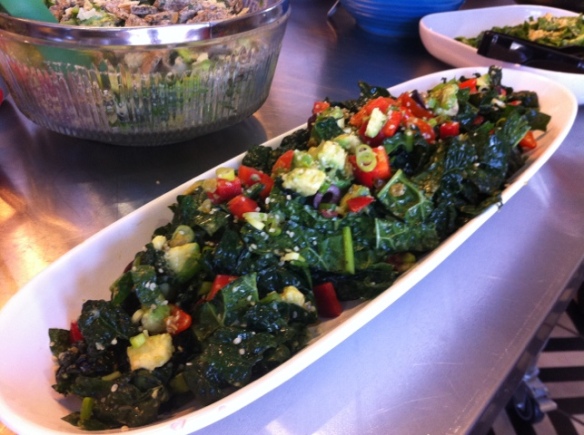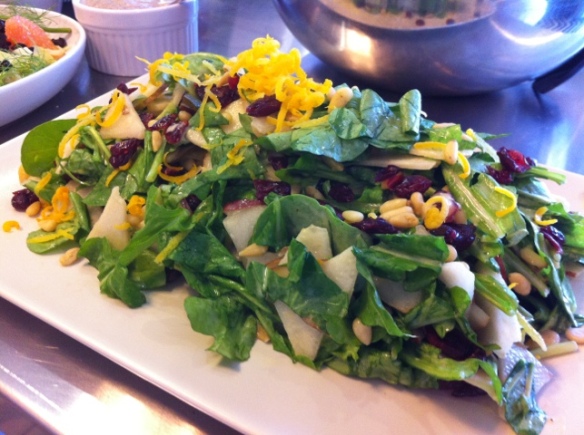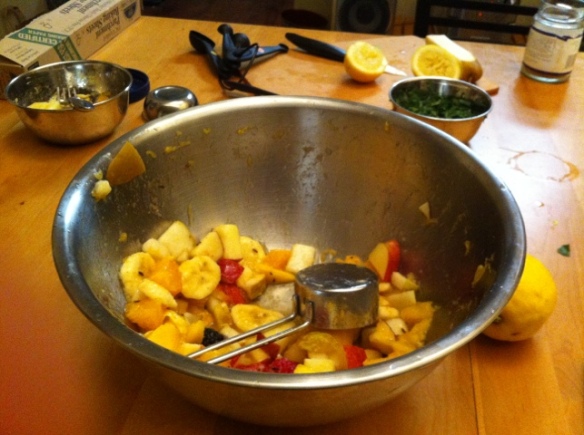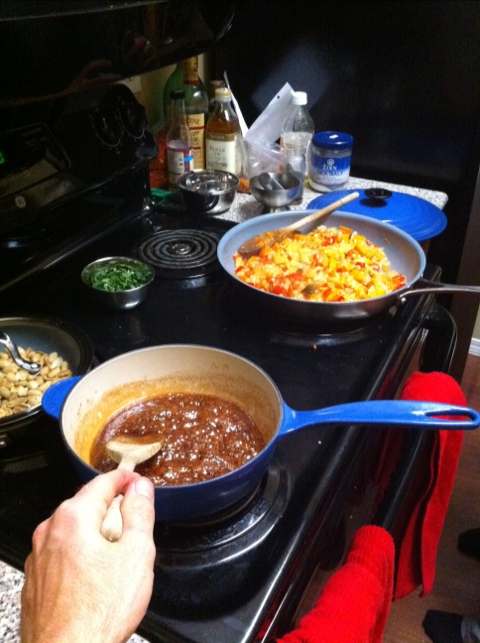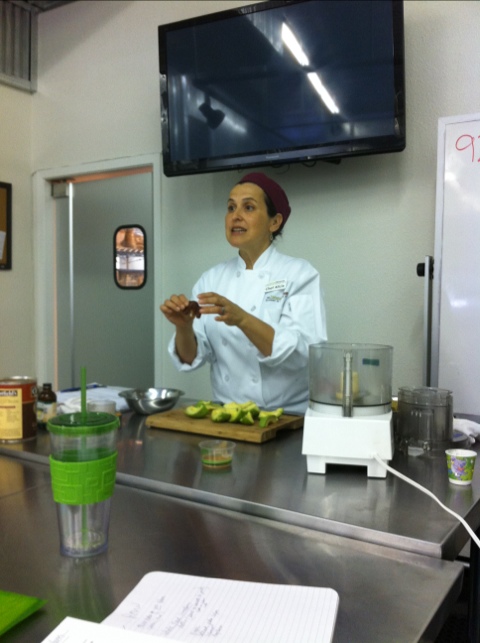Feeling parched?
Maybe it’s all the dehydrating going on with the Natural Epicurean students.
All kidding aside, we spent some time this week learning dehydrating methods. Dehydrators are used extensively in raw food cooking to help create a cooked-like texture in foods. You can make beet chips, kale chips, crunchy croutons, crackers, and other crispy items. In raw food, you don’t heat the foot over 118 degrees, but if you gently heat certain foods and apply a gentle air flow, the food with dry out and develop new textures. The mouth needs a variety of textures to feel satisfied, and it’s true for raw foodists as well.
Dehydrating food is not an instant gratification meal preparation method – the process routinely takes 8 – 24 hours or more. With planning, it can be successful, however.
Below: Chef Alicia shows the class how to smooth a dough out for making dehydrated crackers.
Below: Scoring a crouton spread made from almond meal and herbs. These croutons taste amazing. They are being dried on paraflex paper, which is a non-stick material.
Below: Sampling coconut kefir drink and coconut yogurt.
Below: A sampling of kale chips, crackers, and breads that we had started dehydrating earlier in the week.
Below: Chef Alicia demonstrates rolling a raw cinnamon roll. Yeah!
Below: Raw cinnamon rolls being iced with a raw cashew-based orange glaze. It was pretty good. 🙂

















